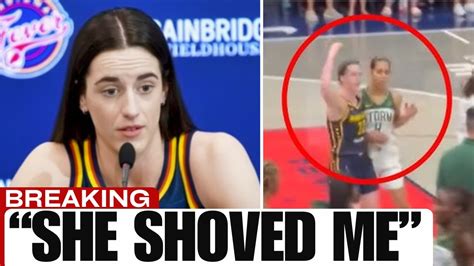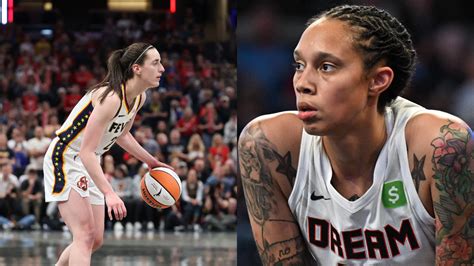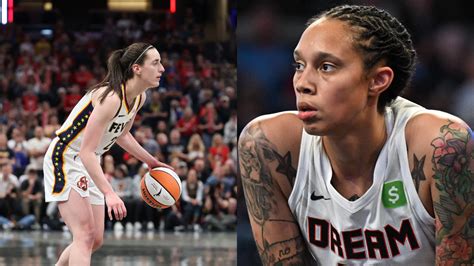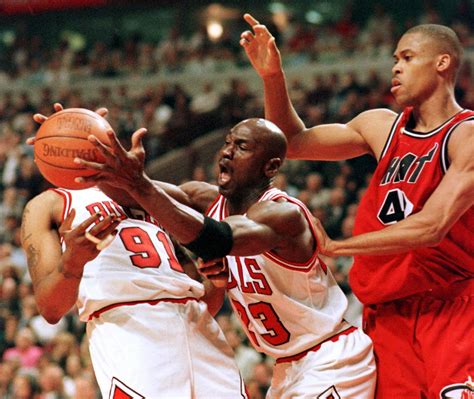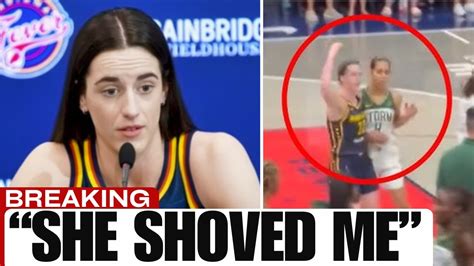
Caitlin Clark was shoved to the floor by Connecticut Sun guard Alyssa Thomas during Saturday’s game, a moment highlighting the increasingly physical nature of games involving the Indiana Fever rookie. The incident, which occurred during the Fever’s 89-72 loss to the Sun, has reignited discussions about how Clark is being officiated and the treatment she is receiving from opposing players.
The shove happened in the third quarter as Clark attempted to navigate through traffic. Thomas, vying for position, forcefully pushed Clark, sending her tumbling to the hardwood. While no foul was called on the play, the WNBA later upgraded the foul to a flagrant 1 after reviewing the game. This decision underscores the league’s acknowledgment that the play warranted stronger disciplinary action.
“It’s just basketball,” Clark said after the game, downplaying the incident. “It is what it is. I didn’t fall and hit my head, so I’m good. It’s just part of the game.” Despite Clark’s attempt to minimize the situation, the play sparked widespread debate among fans, analysts, and even other players about the level of physicality Clark faces on a nightly basis.
The game was marked by several other physical plays, reflecting the Sun’s aggressive defensive strategy. The Fever struggled to cope with the Sun’s intensity, ultimately leading to a decisive defeat. Clark finished the game with 10 points, three assists, and two rebounds.
This latest incident comes amid ongoing discussions about whether Clark is being unfairly targeted by opposing players. Some observers argue that the physicality is simply a reflection of the competitive nature of the WNBA, while others believe that Clark’s high profile and the attention she brings to the league have made her a target.
The game between the Fever and the Sun underscores the challenges Clark faces as she navigates her rookie season. While she has shown flashes of brilliance, she is also dealing with the heightened expectations and increased physicality that come with being one of the league’s most prominent players.
The Play in Detail
The controversial play unfolded midway through the third quarter. As Caitlin Clark maneuvered on the offensive end, Alyssa Thomas made contact, resulting in Clark being pushed to the ground. Replays showed that the push was more forceful than incidental contact typically seen during a game. The referees initially made no call, allowing play to continue. However, the WNBA reviewed the play following the game and determined that a flagrant 1 foul was warranted.
A flagrant 1 foul is defined as unnecessary contact committed by a player. It typically results in the opposing team being awarded two free throws and possession of the ball. By upgrading the foul, the league acknowledged the severity of the contact and sent a message that such plays will not be tolerated.
Reactions and Analysis
The shove immediately ignited discussions across social media and sports networks. Many fans expressed outrage, arguing that Thomas’s actions were excessive and potentially dangerous. Some went as far as to accuse Thomas of intentionally trying to injure Clark.
Analysts weighed in, offering varying perspectives on the play. Some argued that the physicality was simply part of the game and that Clark needed to adjust to the WNBA’s more physical style of play. Others contended that Clark was being unfairly targeted and that referees needed to do a better job of protecting her.
Former WNBA players also shared their thoughts. Several emphasized the importance of physicality in the league but stressed that there was a line between aggressive play and unnecessary roughness. They called on players to respect each other and to avoid plays that could lead to injuries.
“You have to play hard, but you also have to play smart,” said one former WNBA All-Star. “There’s no room for cheap shots in this league.”
Caitlin Clark’s Perspective
Despite the controversy surrounding the play, Caitlin Clark remained composed and focused on the game. In post-game interviews, she downplayed the incident and emphasized her desire to move forward.
“It’s just basketball,” Clark reiterated. “It’s physical. It’s competitive. I’m not going to let it affect me. I’m just going to keep playing my game.”
Clark’s response reflects her maturity and her determination to succeed in the WNBA. She understands that she will face challenges and that she will need to adapt to the league’s physicality. By focusing on her own performance and by remaining positive, she hopes to overcome these obstacles and lead the Fever to success.
The Broader Context: Physicality in the WNBA
The incident involving Clark and Thomas has brought renewed attention to the issue of physicality in the WNBA. The league has long been known for its tough, defensive-minded style of play. Players are expected to be physical and to compete for every possession.
However, there is a growing debate about whether the physicality has crossed the line in recent years. Some observers argue that the increased emphasis on defense has led to more aggressive play and more frequent fouls. They worry that this could lead to injuries and could detract from the overall quality of the game.
Others argue that the physicality is simply a reflection of the league’s competitiveness. They believe that players are pushing themselves to the limit in order to win and that the increased physicality is a natural consequence of this. They caution against overreacting to isolated incidents and emphasize the importance of maintaining the league’s unique identity.
The WNBA has taken steps to address the issue of physicality. The league has implemented stricter rules regarding fouls and has emphasized the importance of player safety. Referees have been instructed to call more fouls and to be more vigilant in monitoring physical play.
However, the debate over physicality is likely to continue. As the league continues to evolve, it will need to find a balance between maintaining its competitive edge and ensuring the safety of its players.
Impact on the Indiana Fever
The Indiana Fever have struggled in the early part of the season, and the increased physicality has undoubtedly contributed to their challenges. As a rookie, Clark is still adjusting to the WNBA’s style of play. She is facing tougher defenses and more physical opponents than she did in college.
The Fever coaching staff has been working to help Clark adapt to the WNBA’s physicality. They have been emphasizing the importance of setting screens, moving without the ball, and using her body to create space. They have also been encouraging her to be more aggressive on offense and to take advantage of scoring opportunities when they arise.
The Fever also need to do a better job of protecting Clark. They need to set tougher screens, provide better spacing, and be more physical on defense. By working together, they can create a more supportive environment for Clark and help her thrive in the WNBA.
The Connecticut Sun’s Perspective
The Connecticut Sun are known for their aggressive defense and their physical style of play. They are one of the toughest teams in the WNBA to score against.
Sun coach Stephanie White has emphasized the importance of playing physical defense but has also stressed the need to play within the rules. She has cautioned her players against committing unnecessary fouls and has emphasized the importance of respecting their opponents.
The Sun’s strategy is to disrupt the opponent’s offense and force them into making mistakes. They use their size and strength to their advantage, and they are not afraid to be physical. While some may view their style of play as overly aggressive, the Sun believe that it is necessary to win in the WNBA.
Looking Ahead
The incident involving Clark and Thomas is likely to have a lasting impact on the WNBA. It has brought renewed attention to the issue of physicality and has sparked a debate about whether the league needs to do more to protect its players.
As the season progresses, it will be interesting to see how the WNBA responds to this issue. Will the league implement stricter rules regarding fouls? Will referees be more vigilant in monitoring physical play? Will players adjust their style of play?
The answers to these questions will have a significant impact on the future of the WNBA. The league needs to find a way to balance its competitive edge with the safety of its players. By doing so, it can ensure that the WNBA remains one of the most exciting and competitive leagues in the world.
The game between the Indiana Fever and the Connecticut Sun served as a stark reminder of the challenges that Caitlin Clark and other young players face as they enter the WNBA. The physicality, the pressure, and the expectations are all immense. But with hard work, determination, and the support of their teammates, these players can overcome these challenges and achieve great success.
The WNBA’s Stance
The WNBA has a delicate balance to maintain. On one hand, the league prides itself on its physicality and competitiveness. This is a key element of its identity and what makes the games exciting to watch. On the other hand, the league must prioritize player safety and ensure that the games are fair.
In the wake of the incident between Clark and Thomas, the WNBA has reiterated its commitment to both of these principles. The league has stated that it will continue to monitor physical play and that it will take action against players who engage in unnecessary roughness. At the same time, the league has emphasized that it will not overreact to isolated incidents and that it will continue to allow players to compete hard.
The WNBA’s challenge is to find a way to strike the right balance between physicality and safety. This will require careful consideration and ongoing dialogue between players, coaches, referees, and league officials.
The Role of Referees
Referees play a critical role in maintaining order and ensuring fair play in the WNBA. They are responsible for calling fouls, enforcing the rules, and protecting the players.
In recent years, there has been some criticism of the officiating in the WNBA. Some observers argue that referees are not calling enough fouls and that they are allowing players to get away with too much physical play. Others argue that referees are calling too many fouls and that they are interfering with the flow of the game.
The WNBA has acknowledged these concerns and has taken steps to improve the quality of officiating. The league has invested in training and development programs for referees and has implemented new technologies to help them make accurate calls.
However, the role of referees is always challenging. They must make split-second decisions in a fast-paced environment, and they are often subjected to intense scrutiny from fans, coaches, and players.
The Future of Caitlin Clark
Despite the challenges she has faced in the early part of her WNBA career, Caitlin Clark remains one of the most promising young players in the league. She has the talent, the work ethic, and the determination to succeed.
Clark is still adjusting to the WNBA’s style of play, but she is making progress every day. She is learning to deal with the increased physicality, the tougher defenses, and the heightened expectations.
As she continues to develop, Clark has the potential to become one of the WNBA’s biggest stars. She has already shown flashes of brilliance, and she is only going to get better with time.
The WNBA needs players like Caitlin Clark. She brings excitement, attention, and new fans to the league. By embracing her and supporting her development, the WNBA can ensure that she has a long and successful career.
Fan and Media Influence
The intense scrutiny surrounding Caitlin Clark is undeniable. Her transition from college superstar to WNBA rookie has been met with unprecedented media coverage and fan interest. While this attention has undoubtedly benefited the league, it also creates a unique set of pressures and expectations for Clark.
The media’s portrayal of Clark can influence public perception and shape narratives about her performance and the treatment she receives from other players. Similarly, fan reactions on social media can amplify both positive and negative sentiments, creating a volatile environment.
It’s crucial for fans and media outlets to approach the coverage of Clark and the WNBA with fairness and objectivity. While celebrating her achievements is important, it’s equally important to avoid sensationalizing incidents or perpetuating divisive narratives. A balanced perspective will contribute to a more constructive and supportive environment for Clark and the entire league.
The Economics of Attention
The Caitlin Clark effect has had a measurable impact on the WNBA’s economics. Television ratings are up, attendance is soaring, and merchandise sales are booming. This surge in popularity has brought increased revenue and attention to the league, benefiting both established stars and emerging talents.
However, this economic boon also raises questions about equity and distribution. It’s important to ensure that the benefits of Clark’s popularity are shared across the league, supporting the growth and sustainability of all teams and players. This may involve strategic investments in marketing, infrastructure, and player development.
The WNBA has an opportunity to leverage the current momentum to build a stronger and more equitable future for the league. By carefully managing the economics of attention, the WNBA can ensure that all players have the opportunity to thrive and contribute to the league’s success.
The Mental Toll
The relentless attention and pressure that Caitlin Clark faces can take a significant toll on her mental well-being. As a young athlete, she is navigating the challenges of professional basketball while also dealing with the constant scrutiny of the media and the expectations of millions of fans.
It’s crucial for Clark to have a strong support system in place to help her manage the stress and pressure. This may include family, friends, coaches, and mental health professionals. The WNBA also has a responsibility to provide resources and support to help players cope with the mental challenges of professional sports.
Prioritizing mental health is essential for the long-term well-being and success of all athletes, including Caitlin Clark. By creating a supportive and understanding environment, the WNBA can help its players thrive both on and off the court.
Flagrant Foul Analysis
The WNBA’s decision to upgrade the foul on Alyssa Thomas to a flagrant 1 reflects the league’s commitment to player safety and its willingness to take action against overly aggressive play. While the initial no-call by the referees on the court sparked controversy, the league’s review process ensured that the incident was thoroughly examined.
A flagrant 1 foul indicates that the contact was deemed unnecessary and excessive. While it doesn’t necessarily imply malicious intent, it does signal that the player’s actions went beyond the bounds of normal basketball play.
The upgrading of the foul serves as a deterrent, sending a message to players that overly physical play will not be tolerated. It also provides a degree of accountability for the incident, acknowledging the potential for harm that could have resulted from Thomas’s actions.
The WNBA’s commitment to reviewing and addressing these types of incidents is crucial for maintaining a safe and fair playing environment for all players.
Frequently Asked Questions (FAQs)
-
What exactly happened between Caitlin Clark and Alyssa Thomas? During the Indiana Fever’s game against the Connecticut Sun on Saturday, Alyssa Thomas shoved Caitlin Clark to the ground in the third quarter. The referees did not initially call a foul, but the WNBA later upgraded the foul to a flagrant 1 after reviewing the play.
-
Why was the shove considered a flagrant foul? A flagrant 1 foul is called when a player makes unnecessary contact. The WNBA upgraded the foul after determining that Thomas’s push was more forceful than incidental contact and therefore warranted a stronger penalty.
-
What was Caitlin Clark’s reaction to the incident? Clark downplayed the incident, saying, “It’s just basketball. It is what it is. I didn’t fall and hit my head, so I’m good. It’s just part of the game.”
-
Is Caitlin Clark being unfairly targeted by opposing players? There is a debate about whether Clark is being unfairly targeted. Some argue that the physicality is normal for the WNBA, while others believe her high profile makes her a target.
-
How has this incident affected the discussion about physicality in the WNBA? The incident has reignited discussions about the level of physicality in the WNBA and whether the league needs to do more to protect its players while balancing the league’s competitive nature. The debate centers around maintaining a balance between intense competition and ensuring player safety.






